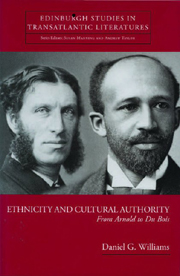3 - CELTICISM, AESTHETICISM AND NATIONALISM
Published online by Cambridge University Press: 12 September 2012
Summary
No one wants to fall out with Davis's comprehensive idea of the Irish People as a composite race drawn from various sources and professing any creed they like, nor would an attempt to rake up racial prejudices be tolerated by anyone. We are proud of Grattan, Flood, Tone, Emmet and all the rest who dreamt and worked for an independent country, even though they had no conception of an Irish nation; but it is necessary that they should be put in their place, and that place is not on top as the only beacon lights to succeeding generations. The foundation of Ireland is the Gael, and the Gael must be the element that absorbs.
D. P. Moran, The Philosophy of Irish Ireland (1905)D. P Moran's argument mirrors the contributionist views espoused by Matthew Arnold and William Dean Howells. While Arnold argued for the amalgamation of the Celtic peoples into a dominant English nation, and William Dean Howells desired the fusion of his nation's ethnic and linguistic differences into a common American identity, Moran conceives of an Ireland in which the nation's racial and cultural diversity is absorbed into a dominant Gaelic culture. R. F. Foster considers Moran's statement that ‘the Gael must be the element that absorbs’ a ‘chilling dictum’. When one considers, however, that this passage was written at a time when such views of ethnic contributionism were widely entertained, a time when the Gael was generally feared and ridiculed in the British press, and when Irish speakers had no access to education in their own language, Moran's dictum may be less chilling than first impressions might suggest.
- Type
- Chapter
- Information
- Ethnicity and Cultural AuthorityFrom Arnold to Du Bois, pp. 121 - 175Publisher: Edinburgh University PressPrint publication year: 2005



